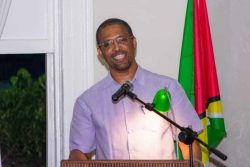SINGAPORE, (Reuters) – A new plan to curb global warming risks becoming a battleground between rich and poor nations and could struggle to get off the ground as negotiators battle over the fate of the ailing Kyoto climate pact.
The 1997 Kyoto Protocol covers only emissions from rich nations that produce less than a third of mankind’s carbon pollution and its first phase is due to expire end-2012. Poorer nations want it extended, while many rich countries say a broader pact is needed to include all big polluters.
Australia and Norway have proposed negotiations on a new agreement, but say it is unrealistic to expect that to be ready by 2013. They have set a target date two years later, in 2015.
“This is the only way ahead. There is no other way than failure,” said a senior climate negotiator from a developed country on the Australia-Norway proposal, who declined to be named because of the sensitivity of the talks.
Developing nations insist Kyoto be extended to commit rich countries to tougher carbon cuts and fiercely resist any attempts to side-line the world’s main climate pact, meaning the Australia-Norway plan faces a tough time .
Failure to agree on a new climate deal could lead to nations committing only to voluntary steps that are unlikely to put the brakes on climate change, risking more extreme droughts, floods, storms and crop failures. It would also weaken efforts to put in place tough policies to promote cleaner fuels and green energy. The proposal calls on major economies to quickly strengthen steps to curb emissions, agree on a way to standardise actions and a system to compare and verify what everyone else is doing. Marathon U.N.-led climate talks failed to meet a 2009 deadline to agree a new pact to start in 2013 and a major conference in Durban, South Africa, in two months is under pressure to launch a process to negotiate a new treaty.
WILD WEATHER
As negotiators haggle, data show the world is heating up, as emissions, particularly from big developing nations, keep growing from burning more coal, oil and gas.
Scientists say floods similar to those that left millions homeless in Pakistan last year and ravaged parts of Australia, could become more common, along with more intense Atlantic hurricanes and wildfires. The United States has already tied its yearly record for billion-dollar weather disasters and the cumulative tab from floods, tornadoes and heat waves this year has hit $35 billion, the National Weather Service said in mid-August. That doesn’t include billions in losses and disaster relief from Hurricane Irene , which struck in late August.
All this throws the spotlight on emissions curbs by the world’s major economies and the fact that these are not enough. When Kyoto was agreed, emissions from poorer nations were much smaller. Now they dwarf those of rich countries.
At the least, the talks need to restore faith that countries can do more to fight global warming.
“We need to push away from this annual cycle of what are we going to achieve into a more realistic timeline of when can we achieve a new agreement. My sense is that none of the negotiators disagree with that. It’s obvious,” said the senior delegate. The Australia-Norway proposal will be a focus of U.N.-led climate talks in Panama this week, the last round before the conference in Durban.
“RECIPE FOR INACTION”
The EU said it broadly supported the submission.
“It tries to take forward the international climate negotiations into the next years, seeing how we can build a broader climate regime,” Artur Runge-Metzger, the EU’s chief climate negotiator, told Reuters. “We think that this seems to be a workable timeline.”
He said it was crucial the Durban meeting agrees on building a new climate framework for all countries, referring particularly to the United States and major developing economies.
China produces about a quarter of mankind’s greenhouse gas pollution and is the top global emitter. While the government is taking steps such as promoting energy efficiency and vehicle fuel standards, these are voluntary.
The proposal will prove divisive for poorer countries.
None more so than nations most vulnerable to climate change, such as low-lying islands that face ever rising sea levels, flooding and shrinking fresh water supplies. They want faster action by big polluters and feel Kyoto is the way to go.
“It basically delays real action to address climate change and vulnerable countries aren’t going to like it,” said Ian Fry, lead climate negotiator for the Pacific island nation of Tuvalu, told Reuters, adding: “It’s a gift to the United States.”
India, the world’s third largest carbon polluter, has also dug in its heels over the proposal.
“Such a plan takes the focus away from Kyoto and redraws negotiating paradigms. Why should the developing countries agree?” said an Indian official with knowledge of the global negotiations, who spoke on condition of anonymity.
The United States, the world’s second-biggest polluter, never ratified Kyoto, saying the pact is flawed because it doesn’t commit big developing economies to meet legally binding emissions curbs.
The proposal could however benefit investors in cleaner power generation, carbon-offset projects and greener buildings. “Anything which moves the world towards more unified action increases the confidence level of investors,” said Geoff Rousel, global head of commodities, carbon and energy for Westpac Institutional Bank in Sydney.
“Therefore, if this plan was to be accepted, you’d be more likely to see more confidence in capital expenditure in energy efficiency and emissions abatement,” he said.
The United States remains cautious. “A legal agreement has to apply with equal legal force to at least the major developing countries so that means China, India, Brazil and so forth,” said chief U.S. climate envoy Todd Stern in recent remarks to the media. And that meant no “escape hatches” or conditions on meeting those commitments, he said.








